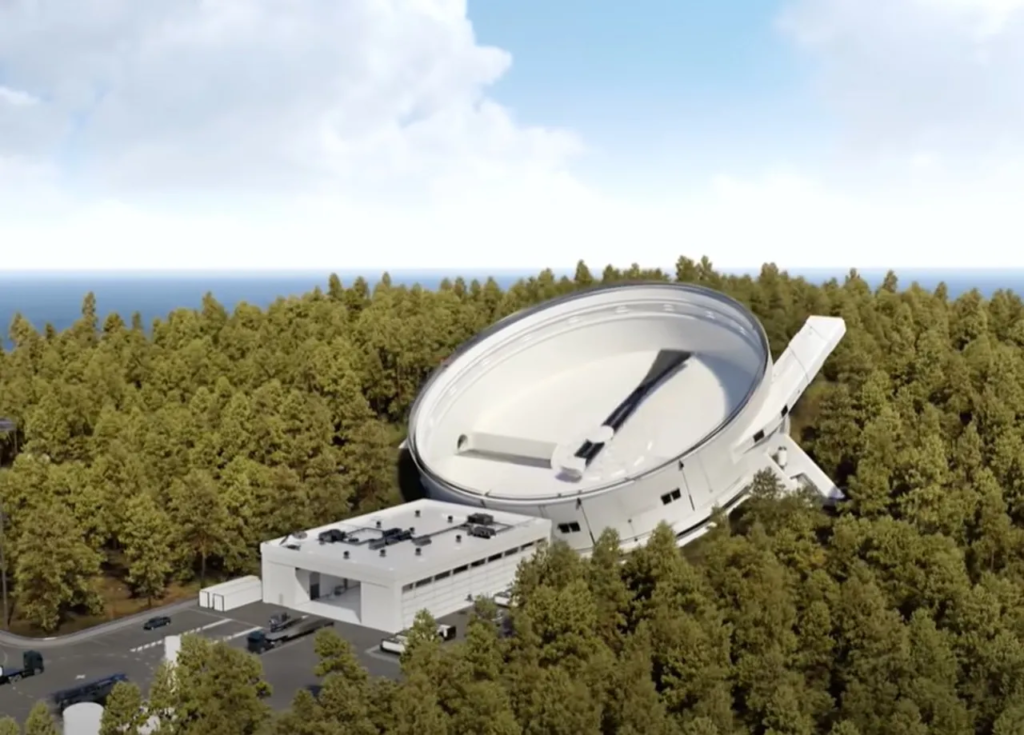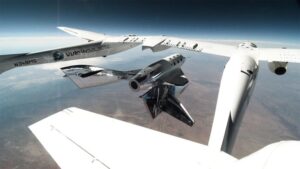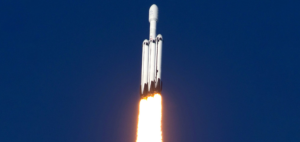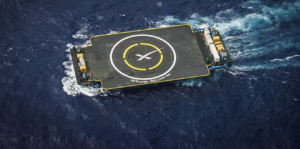
What Happened To SpinLaunch & The Orbital Accelerator?
Almost one year ago was the last time we got a big update from SpinLaunch on their unique launch prototype. Specifically, on September 27th, 2022, SpinLaunch completed its 10th suborbital test flight using its suborbital accelerator. This test was considered a success by the company and was quite a big deal because it included payloads from NASA and a few other groups.
Despite this success, we are approaching a full year without a suborbital test and very little in terms of updates from the company. This brings up the question of what has SpinLaunch been up to and when can we expect to see this full system in action. Based on third party reporting, it seems as if this entire time SpinLaunch has been continuing to try and find a location for an Orbital Accelerator.
A process that is proving to be much more difficult than originally thought. While the suborbital variant is good for testing, if the company truly wants to test this system and reach space, the Orbital accelerator is the next big step. Here I will go more in-depth into the company’s plan, progress on a new launch system, the difficulties they are facing, and more.
Break In Activity

SpinLaunch is a space technology company that is trying to create an alternative method for putting 200-kilogram class satellites into low earth orbit. Unlike traditional fuel-based rockets, SpinLaunch uses a ground-based, electric-powered kinetic launch system that is meant to deliver a substantially less expensive approach to space access.
Apart of this goal, there are two important systems, the suborbital Accelerator and the Orbital Accelerator. The Suborbital variant is designed to operate from 800 to 5,000 mph and acts primarily as a test-bed for the Orbital Launch System. Close to two years ago in 2021, the company’s first launch successfully propelled a test vehicle at supersonic speeds and ended with the recovery of the reusable flight vehicle. Throughout 2022 the system conducted somewhat regular test flights with a variety of vehicles and launch velocities.
The most recent test was the 10th where four partner payloads, as well as two instrumentation payloads, were flown on the Suborbital Accelerator Flight Test Vehicle. For partners, the flight test provided critical data on the launch environment and payload integration process. After the test, the CEO of SpinLaunch was quoted saying, “The data and insights collected from flight tests will be invaluable for both SpinLaunch, as we further the development of the Orbital Launch system, and for our customers who are looking to us to provide them with low-cost, high-cadence, sustainable access to space.”
Funding also seemed to be going well as around that same time, the company announced they had closed a $71 million Series B funding round. In a statement, they said, “The funds will be used to continue the development and commercialization of the world’s first kinetic launch system and satellite product line, designed to provide low-cost, high-cadence, environmentally responsible space access.”
Compared to the multiple test flights last year, there has not been a single one so far this year in 2023. Even the company’s various social media platforms went blank for the most part. Only days ago the company posted on its YouTube channel for the first time in 10 months. However, it was a video on satellite systems rather than the suborbital or orbital accelerator. Instead, it seems the company is mostly satisfied with the results from its tests and now is working to create an actual Orbital variant. Recent updates and reports from third parties also suggest this.
Orbital Accelerator Progress

Last month, it was reported that SpinLaunch is conducting a feasibility study in Western Australia. In this case, they are trying to determine if two areas of land could be used as a launch site for its orbital accelerator. Spinlaunch said it had identified a number of possible launch sites globally based on operational effectiveness, safety and compliance, environmental impact, and market accessibility.
It also said there were several locations in Australia that met the criteria but declined to comment further. However, the Department of Planning, Lands and Heritage said they had received an application for a two-year licence to use the land for feasibility studies and were conducting stakeholder referrals with the local shire and other government agencies.
This report matches with some of the patterns and information we have seen from SpinLaunch. For over a year now on the company’s website FAQ, they have said “SpinLaunch’s Suborbital Launch Site is located at Spaceport America in New Mexico. The first Orbital Launch Site is in final selection in a soon-to-be-disclosed location in a coastal region of the United States. We are closely collaborating with the FAA and other governing agencies for launch site licensing. Based on these recent reports, it looks as if they have begun looking beyond the United States for options.
In reality, the process of finding the right location has been much harder than SpinLaunch was hoping for. Starting back in 2018, SpinLaunch thought they had found a good location in Hawaii. At this point, the company began looking for specific locations on the main island and other areas. Due to Hawaii’s proximity to the equator, it offers a lot of benefits to companies trying to reach orbit. SpinLaunch also pointed out that Hawaii is one of 6 states they were considering for a future location. Unfortunately for the company, the locals were not interested in the company whatsoever and didn’t want them building an Orbital Accelerator anywhere near them. Not long after a meeting with the local community, SpinLaunch ultimately scrapped plans for this specific project.
Years later in 2020, SpinLaunch visited Unalaska Alaska as a potential satellite launch site location. The Ports Director commented, “It sounds like Unalaska may provide SpinLaunch the ideal location, but SpinLaunch has little or nothing long-term to offer in return.” She also mentioned that she asked questions about the long-term opportunities for Unalaska, such as job opportunities, housing development, and an influx of students into the school. She says SpinLaunch was unable to provide satisfying responses and she left the September 2020 meeting with more questions than answers.
When picking a location, you either want to launch as close to the equator as possible, or as far south as possible. A lot of satellites like to go equatorial because that’s also the fastest point the Earth is spinning which aids in launching payloads. In SpinLaunch’s case, you also need to consider the sonic boom and noise pollution among other things.
Either way, based on all this information, it seems like SpinLaunch is still trying to find a good location to build its first Orbital Accelerator. Obviously, this means they are still quite far away as the building won’t start until a location is set in stone.
To get a better idea of what SpinLaunch is pitching to various states and communities, we can take a closer look at the design and size of an Orbital Accelerator. The best place to start is with the massive vacuum chamber. The vacuum chamber is a steel cylinder measuring around 300 feet (91 meters) in diameter. Within this low pressure environment, it allows the tether to spin at nearly 5,000 miles per hour with minimal aerodynamic heating and drag. Next, you have the hypersonic tether in the very center. Made of high strength carbon fiber, the tether is spun up to launch speeds by a central electric drive. This electric drive consists of dual AC electric motors that feed to a hydrodynamic radial bearing assembly. The launch vehicle, which is intended to carry the payload through the atmosphere and into orbit, is attached to the very end of the tether.
After the payload has been spun up to immense speeds, it’s time to release it. On the Orbital Accelerator, once launch speed is reached, an automatic sequence releases the launch vehicle through the exit tunnel with high precision. This leads to the final main component of the system, the exit tunnel. In this case, ultra high speed airlock doors, that operate faster than the blink of an eye, prevent the vacuum chamber from re-pressurization after the launch vehicle is released. This process is intended to help SpinLaunch continue to launch very frequently with limited work in between. Ideally in the future, they can keep this chamber pressurized all day and launch every couple of hours. With the payload released, it shoots into the air at thousands of miles per hour. Not long after, its protective shell is separated and a small rocket ignites to put the payloads into orbit.
With industry plans to launch ten times the number of satellites over the next decade, SpinLaunch believes it’s more urgent than ever to develop environmentally sustainable space access technology. In a future where large numbers of people are traveling to space — structures, equipment, and supplies required to support in-space civilization must also be launched. For tens of thousands of people to someday work and live in space, millions of tons of infrastructure and supplies must be launched. SpinLaunch is confident that can be done with the least environmental impact possible.
Conclusion
SpinLaunch hasn’t said much in the last year but seems to be looking for an Orbital Accelerator location. This process has been in the works for over 5 years now without an actual site being selected. We will have to wait and see how it progresses and the impact it has on the space industry.



